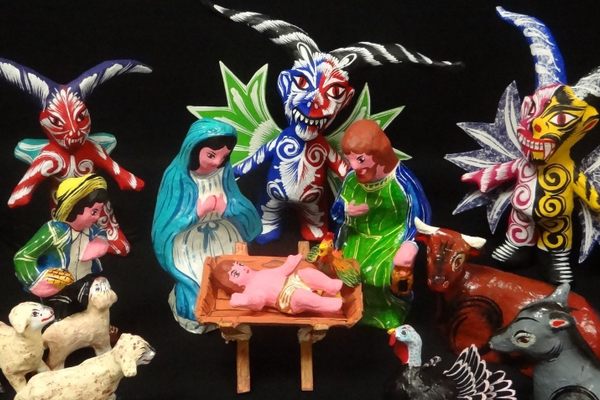
The Carnival Masks of Jacmel, Haiti, Are a Papier-Maché Fever Dream
The seaside town is known for both its history and its artistry.
As part of a special series for 2022, we’re doing a deep visual dive into fascinating Carnival traditions around the world.
Carnival in the coastal Haitian town of Jacmel is a showcase for Haiti’s artists and a trip through the looking glass for animal lovers. The town’s festivities are renowned for the papier-maché masks that don’t so much depict animals as conjure visions of them. The images are stunning: from the tart red and yellow of the jaguar to the searching eyes of the alligator, the artists of Jacmel offer Carnival-goers an experience more vivid than most movies. (The repertoire extends to cover many other creatures as well, along with celebrities and politicians.)
Of course, there’s more to Carnival in Jacmel than world-class papier-maché, though that would surely suffice. This is the prelude to Mardi Gras, after all. (The multicolored houses that line Jacmel’s streets are noted for having influenced the look of New Orleans, too.) As such, the streets are packed with dancing, music, food, and copious drink—from rum to famous local coffee, as Jacmel was historically a hub in the coffee trade.
Indeed, this relatively small, deeply scenic seaside town is home to a rich historical legacy. Toussaint Louverture, a leader of the Haitian Revolution, won control of Jacmel in 1800. Later, the Venezuelan revolutionary Francisco de Miranda first raised the flag of the Republic of Venezuela, liberated from Spanish rule, in the Bay of Jacmel. Since the January 2010 earthquake that devastated Haiti—Jacmel alone sustained hundreds of deaths and thousands of injuries—renewed effort has gone into drawing tourists to the Carnival of Jacmel, which UNESCO recognized in 2014 as a Creative City of Crafts and Folk Arts.
Indigo Arts Gallery shared some papier-maché masks from Jacmel in their collection with Atlas Obscura.




































Follow us on Twitter to get the latest on the world's hidden wonders.
Like us on Facebook to get the latest on the world's hidden wonders.
Follow us on Twitter Like us on Facebook